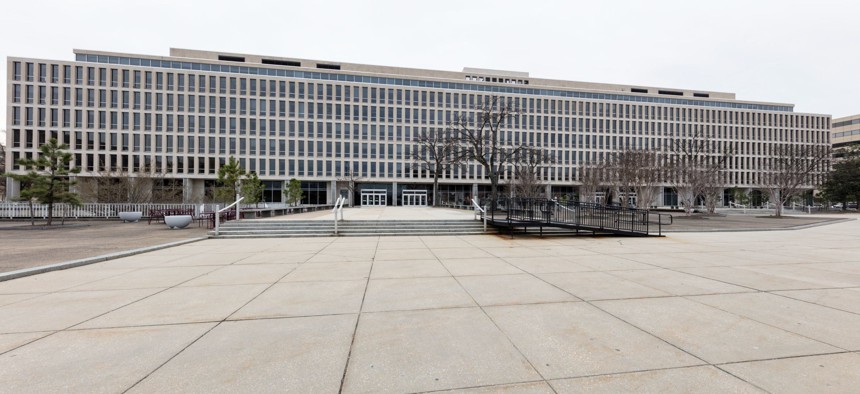'Mixed progress' so far for Office of Federal Student Aid's modernization push

The Department of Education's Lyndon Baines Johnson Building in Washington, D.C. Photo courtesy General Services Administration
A new report from the Government Accountability Office says that the Office of Federal Student Aid doesn't have reliable cost and schedule estimates for the project.
The Department of Education's Office of Federal Student Aid has seen "mixed progress" so far in a modernization effort dating back to 2017, the Government Accountability Office said in a new report requested by lawmakers where it dinged the office for its cost and schedule estimates.
The effort, called the Next Gen Program, is meant to modernize student aid processing, something that FSA spent around $1.3 billion on in fiscal year 2021 when it processed around $112 billion in federal student aid, according to the report.
Right now, the operating environment is "complicated," requiring borrowers and schools to use multiple websites and contact phone numbers, as well as nine different loan service providers, says GAO. The complexity creates challenges for borrowers who need to gather all the information needed to choose a repayment plan or when trying to correct problems in an account.
FSA says that the modernization project has made progress on the customer experience in addition to FSA's operational flexibility, according to FSA comments included in the report.
Richard Cordray, the chief operating officer at FSA, said in reply comments included in the report that the project has resulted in the launch of a modernized website where borrowers can learn about and apply for student aid in one place. FSA has also launched a centralized data hub, he wrote.
The Next Gen situation has affected FSA's ability to retire two of its legacy systems, including the office's central processing system, which GAO tagged as one of the ten government legacy systems most in need of modernization. FSA estimates that it will cost FSA at least $26.5 million to maintain the system until it's retired, according to the report.
GAO also takes issue with the cost estimates for the project so far, which FSA pegged in June at $502 million, because it doesn't include the government's own labor costs for the program. That's up from the $415 million cost estimate made in Sept. 2021, the report says.
"Until it implements processes for accurately tracking and monitoring costs associated with the program, including government-related labor costs, FSA management officials will lack a full understanding of the program's costs," the report says. "This will impair the ability of senior leadership to make informed decisions on the program's future."
The project's scope has changed since it started. Currently, Next Gen includes nine projects, five of which are done as of August 2022. Those include a data strategy plan, data management platform, payment pilot and more. The last four have schedule delays but are ongoing. Three are without estimated implementation dates.
Those projects, originally scheduled to be implemented this and last year, include the modernization of FSA's loan serving environment, something FSA is now attempting for the third time after two failed attempts, the report says.
The report also includes recommendations, including that FSA update how it does cost and schedule estimations.
FSA's Cordray noted in his comments that GAO's evaluation focuses more on best practices for IT management rather than the reality of the legal and contractual environment in which FSA is operating.
"While FSA appreciates and benefits from GAO identifying IT best practices in implementing Next Gen, FSA nonetheless operates under certain constraints and must consider how to optimize in terms of existing contracts, current staffing levels, contractor capabilities and other available resources, including funding levels provided by Congress," Cordray wrote.



